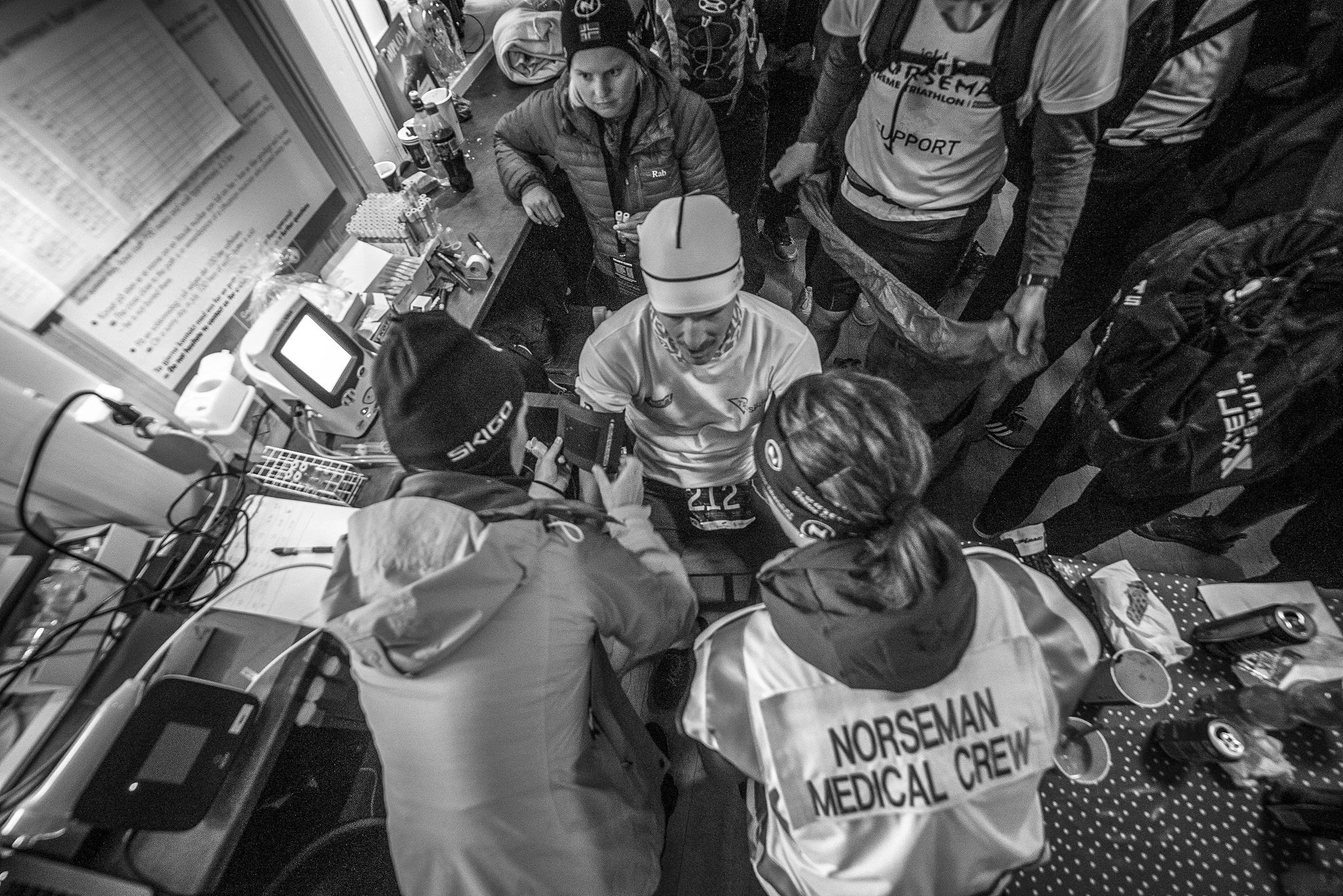What the blood reveals: How Norseman pushes and heals the human body
Photo: Ola Morken
After Zalaris Norseman Xtreme Triathlon, the finish line isn’t the end for science. For researcher Martin and the Norseman Research Team, it’s the beginning. By analysing the blood biomarkers of athletes before and after the race, they’re uncovering how the body reacts—and recovers—from one of the most extreme endurance tests on the planet.
Unlocking the secrets of recovery
For Martin and his fellow scientists, Norseman offers a rare window into how the human body responds under extraordinary physical stress. “It’s a unique opportunity,” he explains. “A few years ago, colleagues on the Norseman Research Team used ultrasound to look at how athletes’ arteries behaved after the race. What they found sparked our curiosity—we wanted to dive deeper.”
That dive led them to blood.
Specifically, biomarkers are molecules in our blood that tell a story about how the body functions. By analysing these before, just after, and days following Norseman, the researchers aimed to track how different systems reacted to and recovered from the brutal demands of the race.
The role of L-arginine and nitric oxide
Among the substances measured were L-arginine, ADMA, and SDMA—all involved in producing nitric oxide (NO), a gas that helps blood vessels widen and deliver oxygen to hard-working muscles.
“When you exercise, your body needs more oxygen, and your arteries dilate to meet that demand,” Martin says. “Nitric oxide (NO) facilitates that process; these substances are the raw materials.”
While it’s still unclear if these molecules directly affect performance, their importance for cardiovascular health makes them worth studying—especially in a race like Norseman.
What happens after the finish line?
So, what did they find?
“We already knew from our ultrasound work that the arteries lose some of their ability to dilate right after the race,” Martin explains. “This time, we saw that some of the substances linked to NO production dropped, too.”
The good news? Most of these changes didn’t last. “Many biomarkers normalized the next day, and nearly all were back to baseline after one week,” he says. “It’s remarkable how quickly the body recovers after something extreme.”
Surprising—but reassuring—results
One of the most striking takeaways was how quickly the body bounced back. “Viewed in isolation, some of the changes we see might be interpreted as signs of disease or dysfunction,” Martin admits. “But in the context of an extreme endurance event, they’re likely just temporary, adaptive responses.”
This is an important distinction. What looks pathological in a hospital could be physiology in survival mode during a race like Norseman.
A word of caution on supplements
While the results might tempt athletes to chase specific supplements, Martin urges caution. “It’s easy to think: if L-arginine is good for blood flow, taking more must help performance or recovery. But the human body doesn’t always work that way,” he explains. “We didn’t test supplements, and our data shouldn’t be used to justify buying them.”
That said, some research exists. A 2020 meta-analysis by Viribay and colleagues reviewed 15 studies on arginine supplementation. While four studies showed improved performance, the majority found no effect. Overall, the statistical trend favoured supplementation—but only modestly.
The takeaway?
“If you’re doing everything else right, the impact of something like arginine is likely to be very small,” Martin says. “Training, sleep, and nutrition fundamentals will always matter more.”
The bigger picture
As Norseman continues to push the limits of human performance, it also fuels discovery. Martin and the Norseman Research Team`s work is part of a growing effort to understand what happens when the body is pushed to its brink—and how it finds its way back.
“There’s still so much to learn,” Martin says. “But one thing is clear: the human body is capable of extraordinary recovery, even after Norseman.”


